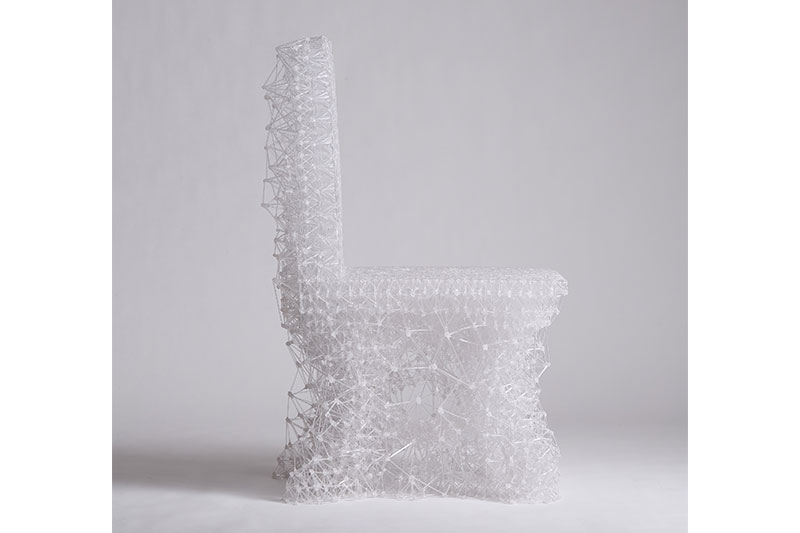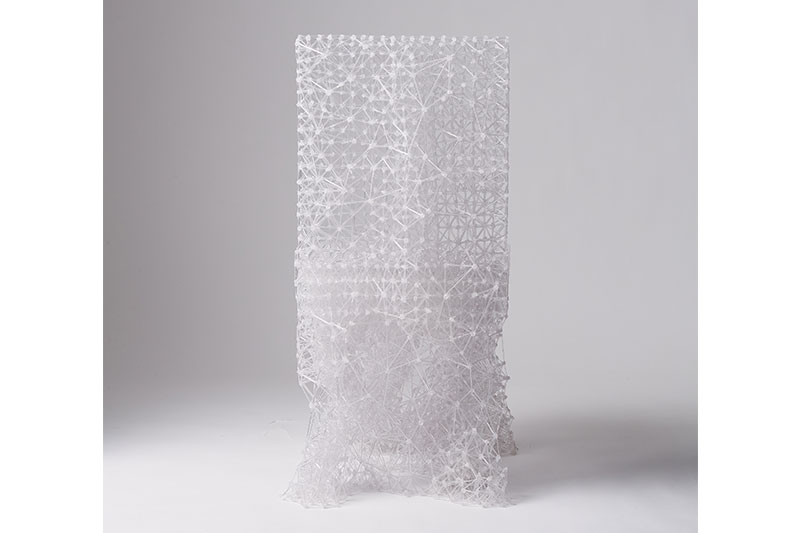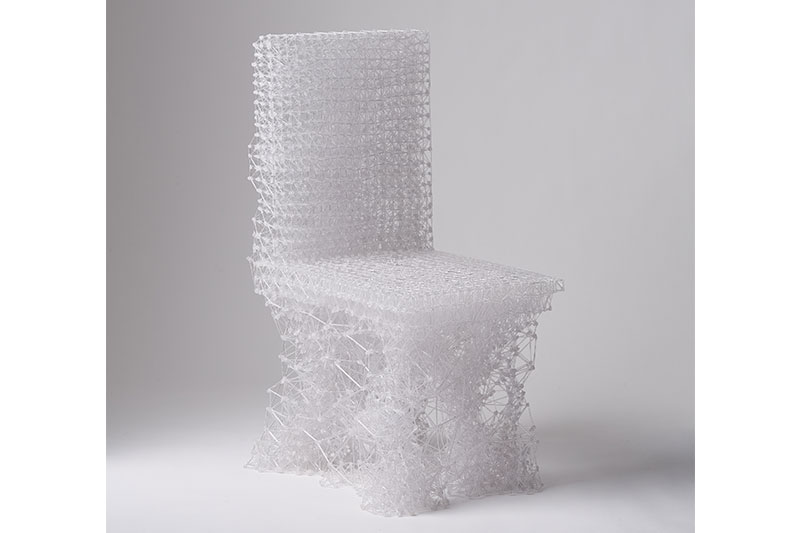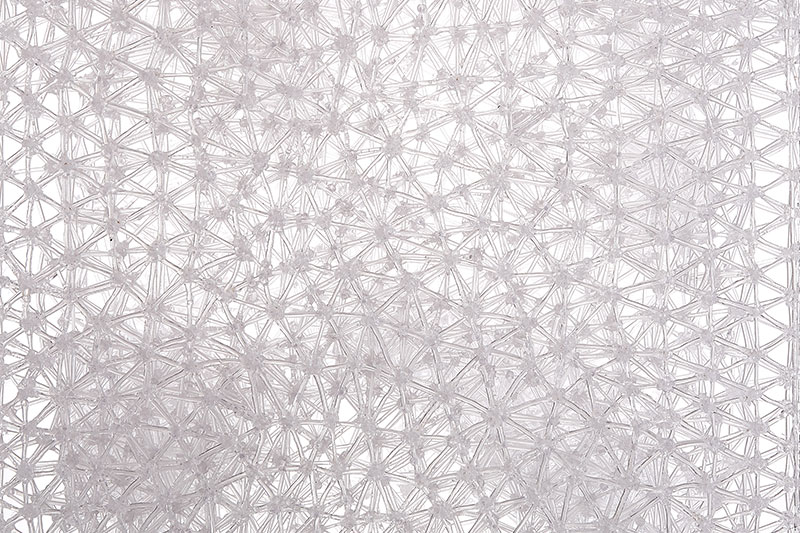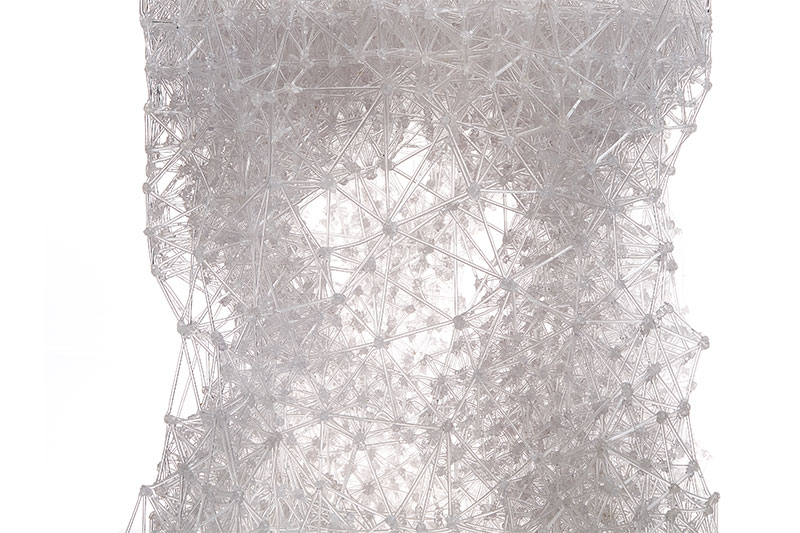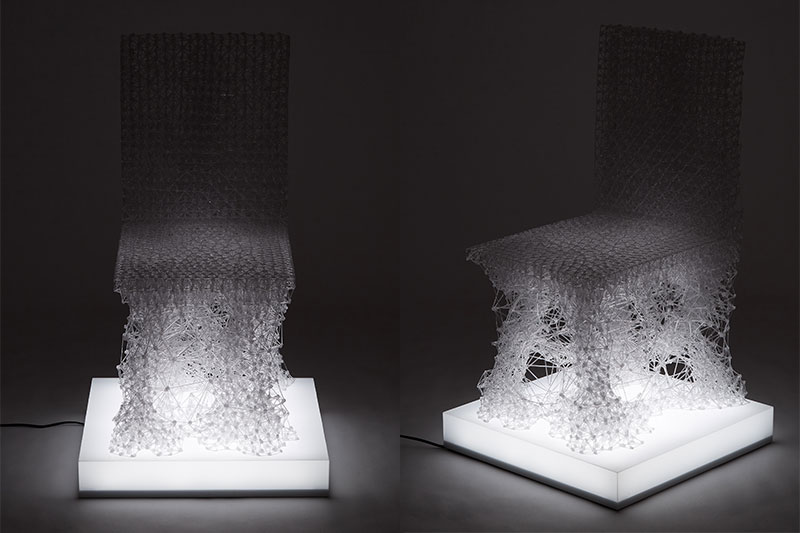For South Korean artist Shim Jeong-Sub, everything is about making a connection.
A student at Hongik University, Jeong-Sub studies woodworking and furniture design. But artistry and design is all about innovation, and for Jeong-Sub’s latest project it was time to look beyond traditional construction materials.
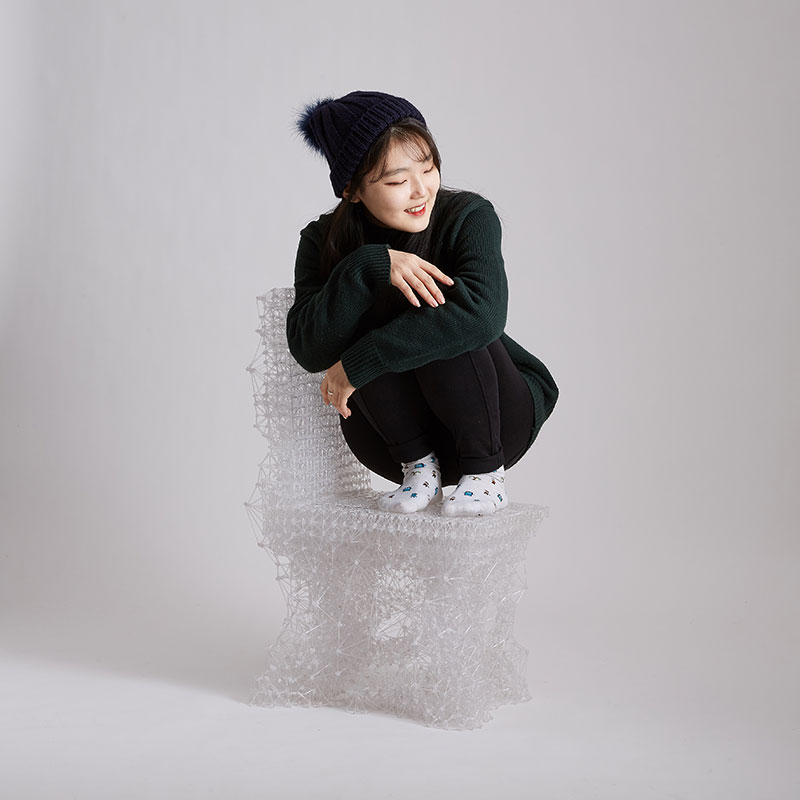
“While experimenting with different tools and materials during the starting process, I turned my eyes to 3D printing,” Jeong-Sub says. In order to make 3D-printed furniture a reality, it was important to consider the strength and durability of 3D printing filaments like PLA and ABS.
"The 3Doodler uses the latest technology, but it can apply a wide range of human creativity." Share
While using a 3D printer was a possibility, there was something more appealing to the hand-made nature of using the 3Doodler. “Unlike previous 3D printers which require a complex method and high cost, the 3Doodler allows users to draw in 3-dimensions while keeping the same basic process of an FDM 3D printer with ejected molten plastic,” explains Jeong-Sub. “The 3Doodler uses the latest technology, but it can apply a wide range of human creativity.”
With a concept in place and new technology to make it a reality, the next task was to create the intricate structure which would successfully serve as functional furniture.
While most Doodled structures are created with standard horizontal and vertical lines, creating furniture required something different. “After judging that the thickness and the length of the filament would not support the weight of an average man, I experimented with various forms of structure,” says Jeong-Sub.
"I tried to pursue the natural and composite texture of connected filaments, creating a more coincidental impression." Share
After rigorous testing, Jeong-Sub finally found a solution. “I used a truss structure, which can support the most force,” he reveals. “By ejecting the molten plastic and connecting them one by one, the work was produced.”
“Assuming the ability to sit, I first formed a structure which supports the weight of a person,” Jeong-Sub explains. “After judging that it can support the force, I tried to pursue the natural and composite texture of connected filaments, creating a more coincidental impression.”
The result was a full-sized chair and design masterpiece which Jeong-Sub appropriately named “Connect”. The finished piece took two full months to complete, with a total of 450 meters (almost 1,500 feet) of connected filament.
Jeong-Sub continues to explore how hand-drawn 3D forms made with the 3Doodler can be elevated to sculptural interior design pieces. His latest works follow the same concept as his Connect chair. He is currently putting the finishing touches on a pendant light and an electroformation, where Jeong-Sub created an underlying structure modeled with the 3Doodler which was then electroformed and covered with copper.
All of his work reflects Jeong-Sub’s own take on modern life. “This piece ‘Connect’ visualizes in detail the figure of modern people living with connections,” Jeong-Sub explains, “as well as focusing on showing the effect of coincidence when each connection creates a structure with more complexity and variations.”![]()

